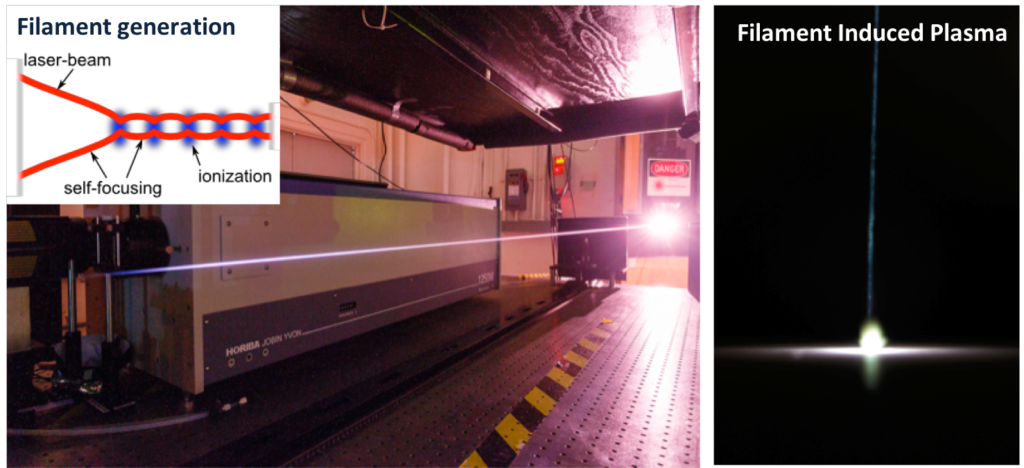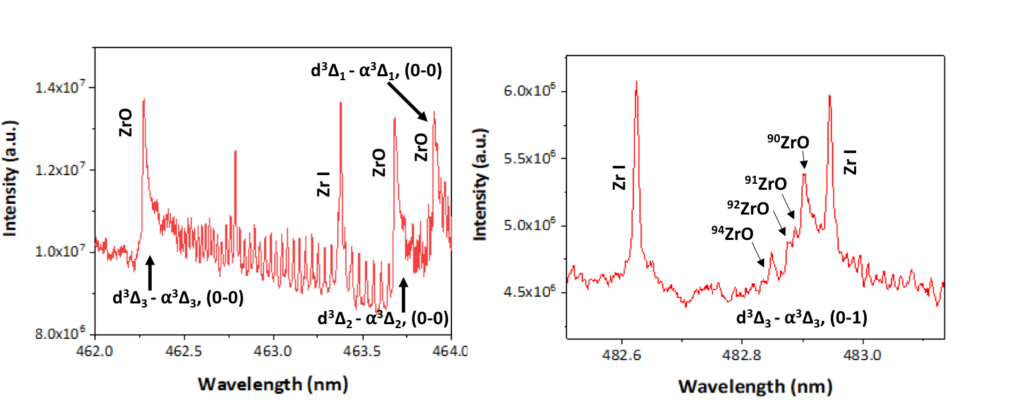Femtosecond Laser Filaments for Remote Pulsed Laser Propagation

Unlike nanosecond lasers, femtosecond systems allow propagation of beams over extended distances (tens of km) due to the non-linear process of laser filamentation. Filamentation of an intense, ultrashort laser pulse arises from dynamic balance between beam Kerr self-focusing and defocusing action of free electrons produced by multi-photon ionization of air molecules. Unlike ns lasers, self-sustained fs filaments do not require large telescope systems to focus the laser beam. Filaments have a central core (typical diameter: 102 mm) with high intensity (1013 W/cm2) that is surrounded by an energy reservoir, which can replenish the filament core and support the filamentation process over long distances.
Remote Isotope Sensing in Solid Samples
 We introduced a new remote sensing technology for real-time isotopic analysis, called: Femtosecond Filament-Induced Laser Ablation Molecular Isotopic Spectrometry (F2-LAMIS).The technique combines femtosecond (fs) laser filamentation and ablation-based molecular isotopic spectroscopy, thereby enabling isotopic analysis at a distance, in ambient air and at ambient pressure. Spectral fitting of F2-LAMIS spectra enables semi-quantitative isotopic analysis without the use of calibration standards. This new technology opens up new possibilities for direct isotopic ratio measurements at remote distances.
We introduced a new remote sensing technology for real-time isotopic analysis, called: Femtosecond Filament-Induced Laser Ablation Molecular Isotopic Spectrometry (F2-LAMIS).The technique combines femtosecond (fs) laser filamentation and ablation-based molecular isotopic spectroscopy, thereby enabling isotopic analysis at a distance, in ambient air and at ambient pressure. Spectral fitting of F2-LAMIS spectra enables semi-quantitative isotopic analysis without the use of calibration standards. This new technology opens up new possibilities for direct isotopic ratio measurements at remote distances.